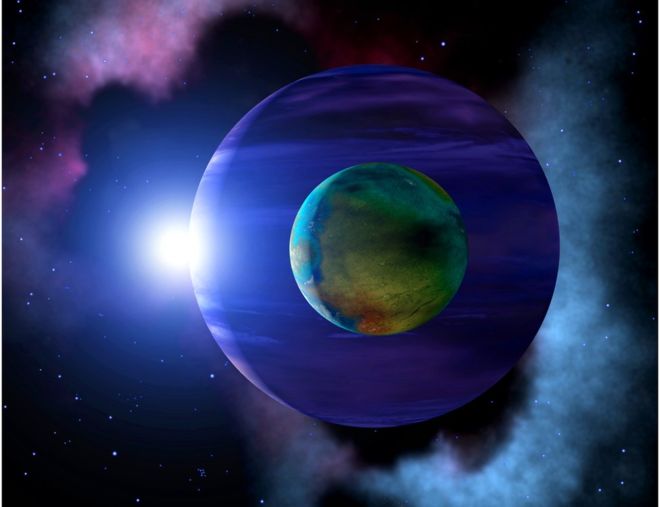First Extra-Solar Moon Discovered?
The Image of an exomoon orbiting an exoplanet.
October 5, 2018
Astronomers David Kipping and Alex Teachey have possibly discovered the first moon outside of our solar system.
The moon is the size of Neptune. It was seen via Nasa’s Kepler spacecraft and then observed in more detail through the Hubble telescope, which the astronomers were given 40 hours to use.
The astronomers utilized two signals to detect the moon: a decrease in the parent star’s brightness and the delay in the source planet’s revolution around the sun. Another, smaller decrease in the star’s brightness followed the planet’s passing and led to the conclusion of the size and presence of the moon. More observations are necessary to properly identify it, though Teachey has stated: “We are excited about this result, certainly it is a tantalizing result.” His partner David Kipping has spent a decade in the pursuit of exomoons and shares his partner’s perspective.
Astronomers have detected around 3,500 exoplanets, though this new-found moon is the first spatial body that is well within the range of observation. The study of the specific moon began in July 2017.


